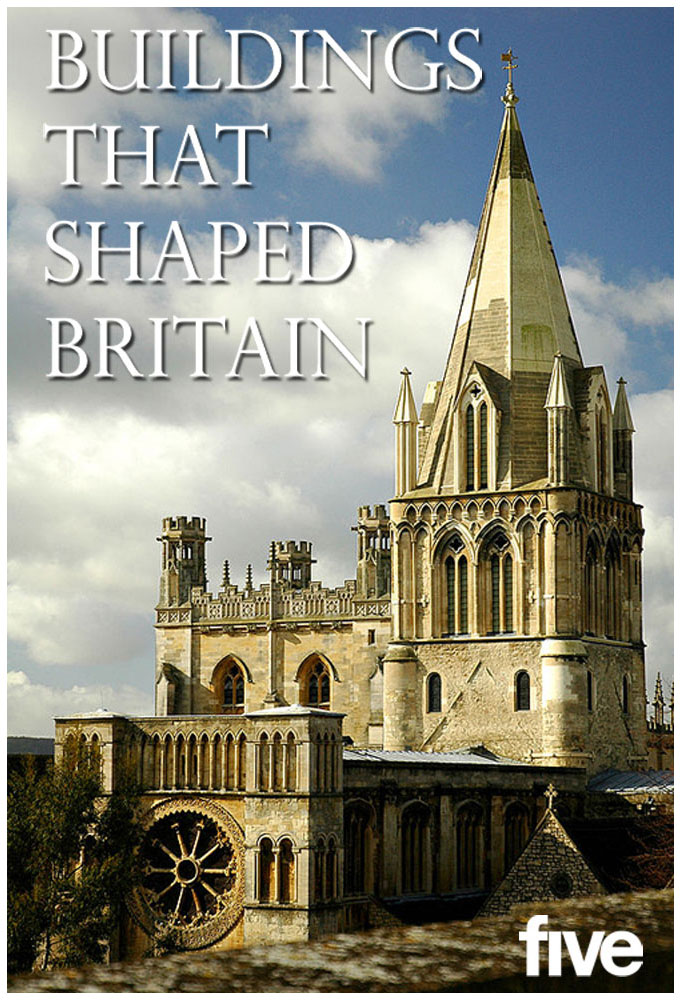
Buildings That Shaped Britain
Non notée
Année : 2006
Nombre de saisons : 1
Durée moyenne d'un épisode : 60 minutes
Genre(s) : Documentaire, Histoire
In this fascinating series, we chronologically chart the most significant evolutions in British architecture. We outline the impact that this architectural history has had on the cultural, social and political development of Britain from The Dark Ages to the 21st century. We join respected historian - and Chief Executive of English Heritage - Dr Simon Thurley on a compelling journey through Britain’s architectural history. He paints an exhaustive and extremely interesting picture of the human ingenuity that has shaped our nation’s structural past. Visiting Britain’s groundbreaking buildings, Thurley shows how Britain has developed its own distinctive architecture over the last thousand years, observing that this tells us a great deal about who we are today. With the additional help of period specialists - historians, engineers, archaeologists and architectural historians - the series uncovers amazing stories and revelations about each building, revealing why and how certain structures have helped alter the architectural, social, political and geographical landscape of Britain. Produced by Talkback Thames for Channel 5 in association with the History Channel. First shown on Five.
Saisons

Saison 1
Épisodes
Choisissez votre saison au dessus et découvrez les épisodes qui vous attendent !
Épisode 1 - Conquest
2 juin 2006
In ‘Conquest’, we reveal how the Britain we see today has been shaped by successive waves of invaders and settlers. We look at the Norman conquest of England, which was initiated by William the Conqueror’s invasion – and victory at the Battle of Hastings – in 1066. The conquest massively altered England’s language, culture and governmental system. It also had a profound impact upon the country’s architecture. Thurley explains how the invaders effectively destroyed the architecture of the Anglo-Saxons. In the process, a culture which was arguably more sophisticated than the new occupying one was irretrievably lost. As the Normans assimilated into British society, they imposed a new style of Romanesque architecture. The Normans erected numerous castles, fortifications, monasteries, abbeys, churches and cathedrals, all featuring distinctive rounded arches. We ask whether these building methods were new and uniquely British, exploring the considerable debt that the Normans owed to the first invaders to shape Britain - the Romans.
Épisode 2 - Skyscrapers of the Middle Ages
9 juin 2006
In ‘Skyscrapers of the Middle Ages’, we journey to the period in between the Norman landing and the beginning of the Tudor era, exploring the architecture of spirituality and learning. Medieval buildings were erected in accordance with the notion of being ‘fit for purpose’; the churches and cathedrals of the period were both visually stunning and deeply functional. White Tower, which is in the centre of the Tower of London, was built on the orders of William the Conqueror, and completed in 1097. Durham Cathedral, Haddon Hall, and Kings College Chapel in Cambridge, are three further examples of the striking architecture of the Middle Ages. We look at the turrets and battlements of medieval castles, as well as palatial manor houses and parish churches. We also look at the dwellings of the poorer classes, which were generally dark, primitive structures consisting of one or two rooms. Perhaps most importantly, we ask why the most spectacular buildings in Britain were created during times of pestilence, fear and turmoil.
Épisode 3 - Castles and Monasteries
16 juin 2006
In ‘Middle Age Corporations’, we look at the castles and monasteries which kept the country going during the wars of the later Middle Ages, revealing how they shaped the landscape we still live in today. We also look at the gradual carving up of the British countryside, asking why some houses survived while others were destroyed.
Épisode 4 - The Country House
23 juin 2006
Historian presenter Simon Thurley turns his attention to the English country house that represented the very heart of Britain's political, economic and cultural life in the 16th to 18th century. Unlike Europe, where power resided absolutely with the monarch, in Britain it rested not only with the king, but also with parliament, which was controlled by the great men of the counties and shires. These aristocrats were kings in their own little 'countries'. Flush with money given to them by Henry VIII after he took over the monasteries, they cemented that power through building wonderful houses. More than 700 were built between 1530 and 1750 and their design reflected the roles of lord and ladies and the distancing of their assistants to 'downstairs' staff.
Épisode 5 - Birth of the Metropolis
30 juin 2006
Episode five of this fascinating series looks at how cities grew and how houses, streets and town squares developed to enhance advantageous alliances. Presenter Simon Thurley explains how British cities stemmed from dodgy property deals, high society marriage markets and low life criminals. Before the restoration of the monarchy, London was built behind a high wall, crammed houses and shops jutting out from narrow and winding lanes. But with the king and his courtiers residing in London, people wanted to live like them, in houses with smart fronts overlooking fashionable squares to promenade around. In Bath, York and Bristol, the upwardly mobile styled their houses along classic Roman lines picked up from their holidays on the continent.
Épisode 6 - Countryside Revolution
7 juillet 2006
In ‘Countryside Revolution’, we chart the invention of the romantic image of the countryside, examining the rural idyll of small enclosed fields, sturdy farmhouses, gentrified vicarages and cosy cottages. We ask if the idealised image of the constructed landscape and the tamed countryside was ever really real. Finally, we ask the media and public alike are so obsessed by a particular idea of the countryside.
Épisode 7 - Revolution
14 juillet 2006
The industrial revolution not only changed the face of Britain, it changed the world. For the first time, buildings were constructed just for 'work' and vast cities and slums were created. Factories and workhouses brought a look, sound and smell like nothing before them. In the countryside where medieval technology of water mills changed to steam power derived from coal, the rural idylls built around mills and streams ended. Canals to carry the coal barges were dug, snaking through the countryside from the factories to the ports. The age of steam also brought the railway and travel was no longer the sole preserve of the wealthy.
Épisode 8 - The Modern Age
21 juillet 2006
Historian Simon Thurley concludes this fascinating series with a look at 20th century architecture. The horrors of World War I stimulated a design revolution that turned its back on history and tradition and went instead for simplicity and functionality. The modernists 'intellectualised' building, indicating that if you lived in a house like this, your life would be better. World War II gave the architectural brutalists an opportunity to demonstrate on a massive scale as German bombing destruction demanded widespread rebuilding of British centres. But ugly high-density towers and modernist structures were clumsy and unworkable solutions.
Vidéos
Oups aucune vidéo pour le moment... Revenez plus tard pour des aventures en images !

Aucun avis pour le momment...